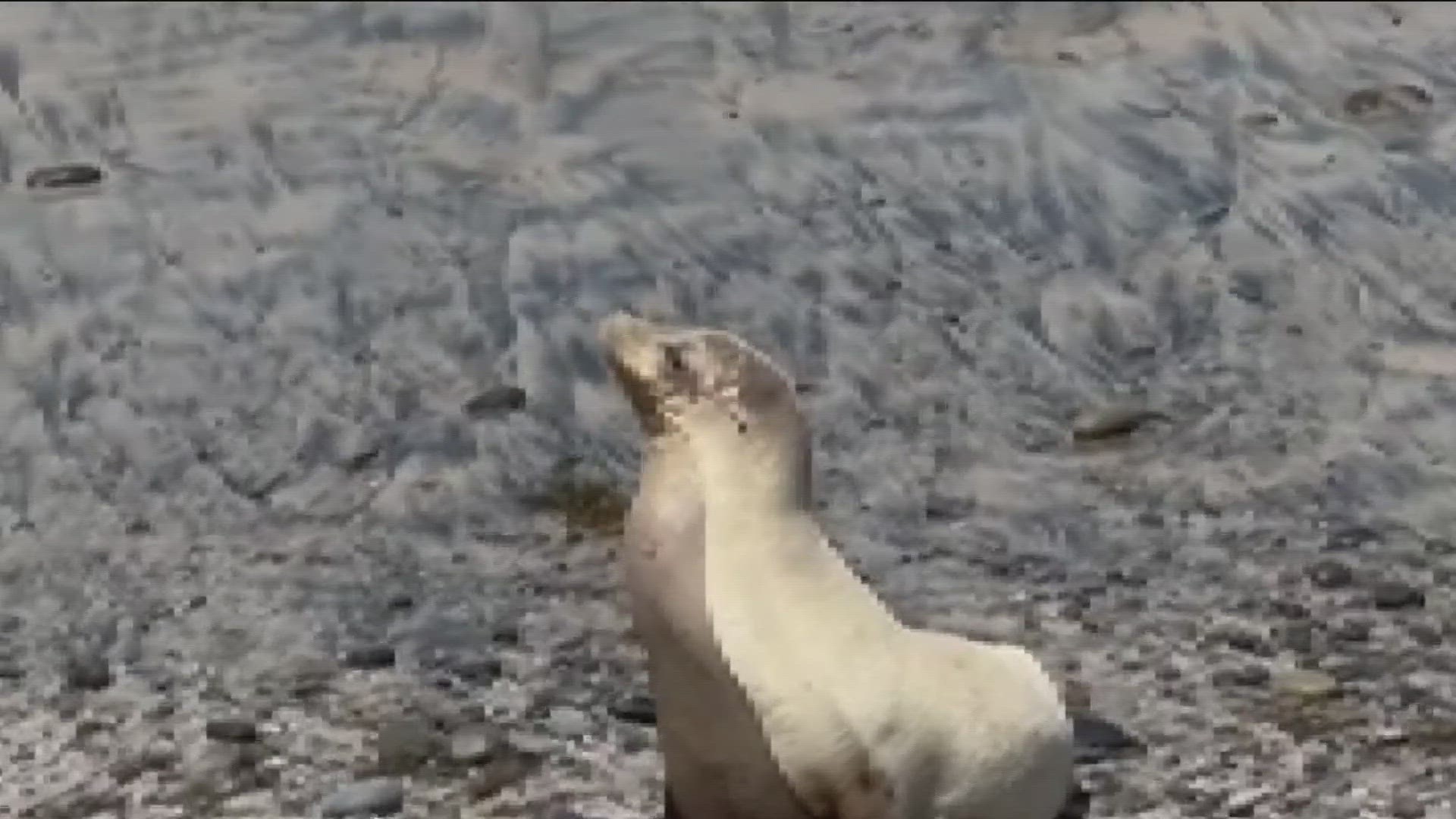CARLSBAD, Calif. — A sea lion exhibiting symptoms of a neurotoxin called domoic acid was rescued by beachgoers and SeaWorld in Carlsbad.
A man exploring South Ponto Beach in Carlsbad came across a sea lion who he described as in "obvious distress," and immediately knew he could call SeaWorld's rescue team to provide medical help.
"I saw the sea lion sitting there, well lying there and just shaking a lot and didn't look well. There was another couple there and the guy said I think it's dying," said Matt Leonard, a Carlsbad resident.
Leonard told CBS 8 that SeaWorld responded to his call for help the next morning on June 25.
"They came to rescue her, she was likely poisoned by the domoic acid issue that has been impacting shellfish and fish in SoCal," Leonard shared on social media.
The sea lion was said to be erratic in behavior and had severe head tremoring, symptoms that are believed to be a result of toxic algae bloom on the coast of California.
Dr. Kelsey Herrick with SeaWorld San Diego said the rescue team responded to eight animals in the San Diego area exhibiting symptoms of the neurotoxin-producing algae bloom - seven of the animals were sea lions, and the other was a dolphin.
"The dolphin had to be humanely euthanized along with a couple of the sea lions," Dr. Herrick told CBS 8.
Dr. Herrick said the sea lion who was rescued in Carlsbad was given medication and will be under a weeks-long observation period.
The National Oceanic and Atmospheric Administration said the rapid growth of harmful algae along parts of the Southern California Coast is believed to have killed hundreds of California sea lions and close to 60 dolphins.
The rapid growth of the algae Pseudo-nitzschia causes the production of a neurotoxin called domoic acid. This leads to animal strandings, as the toxin is transferred into the marine food web.
Domoic acid does not affect humans unless they consume it in contaminated food items.
Symptoms of domoic acid poisoning in humans can occur within 30 minutes to 24 hours after eating toxic seafood. In mild cases, symptoms may include vomiting, diarrhea, abdominal cramps, headache, and dizziness, according to the California Department of Public Health.
SeaWorld rescue teams are on call 24/7/365, partnering with multiple government agencies to rescue and help animals in need of care urge the public to report an animal in distress to 1-800-541-SEAL (7325) or click here.
WATCH RELATED: Man caught on camera petting sea lion pup in La Jolla


